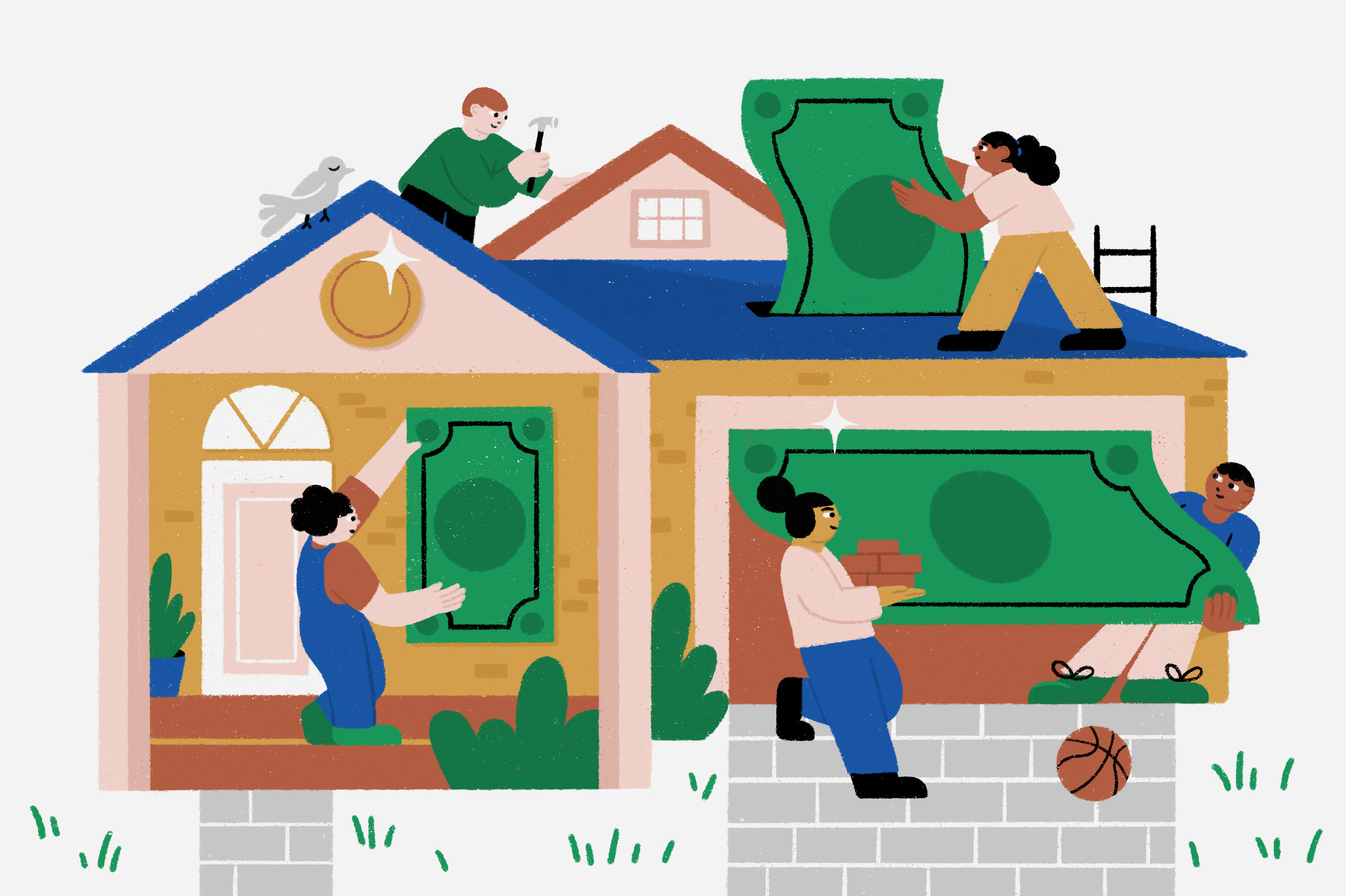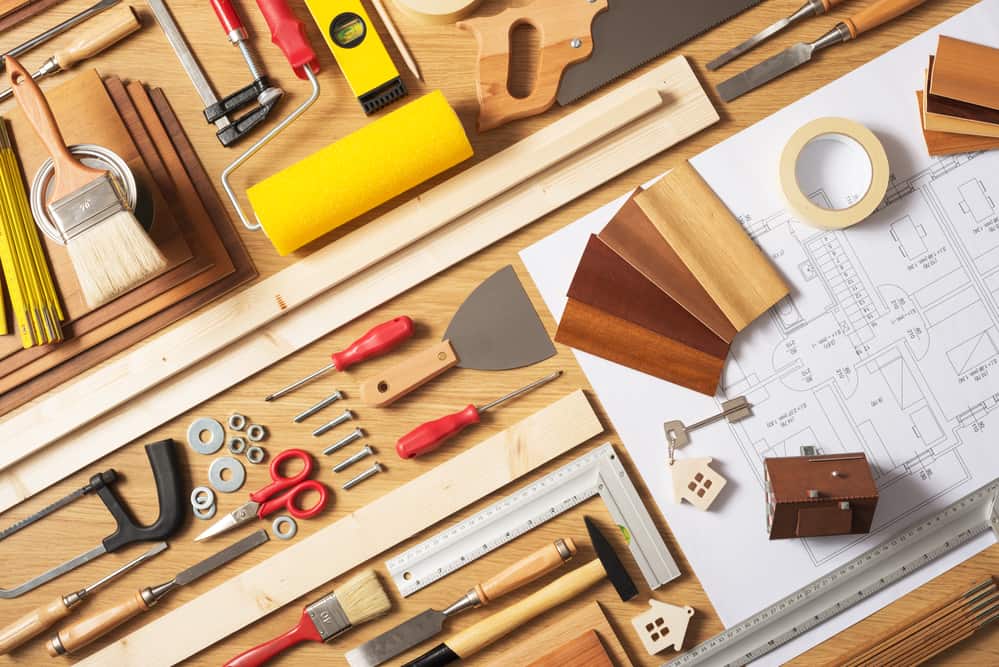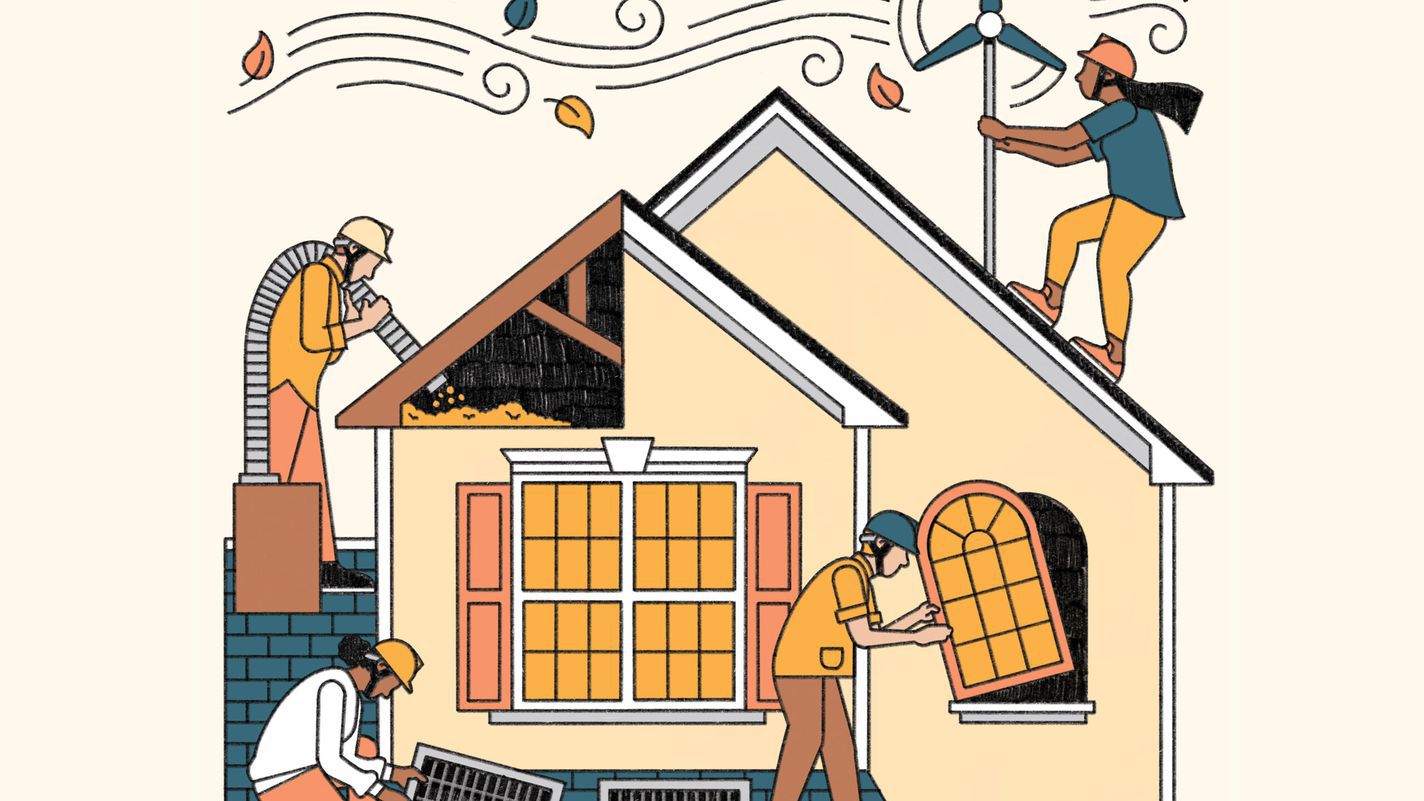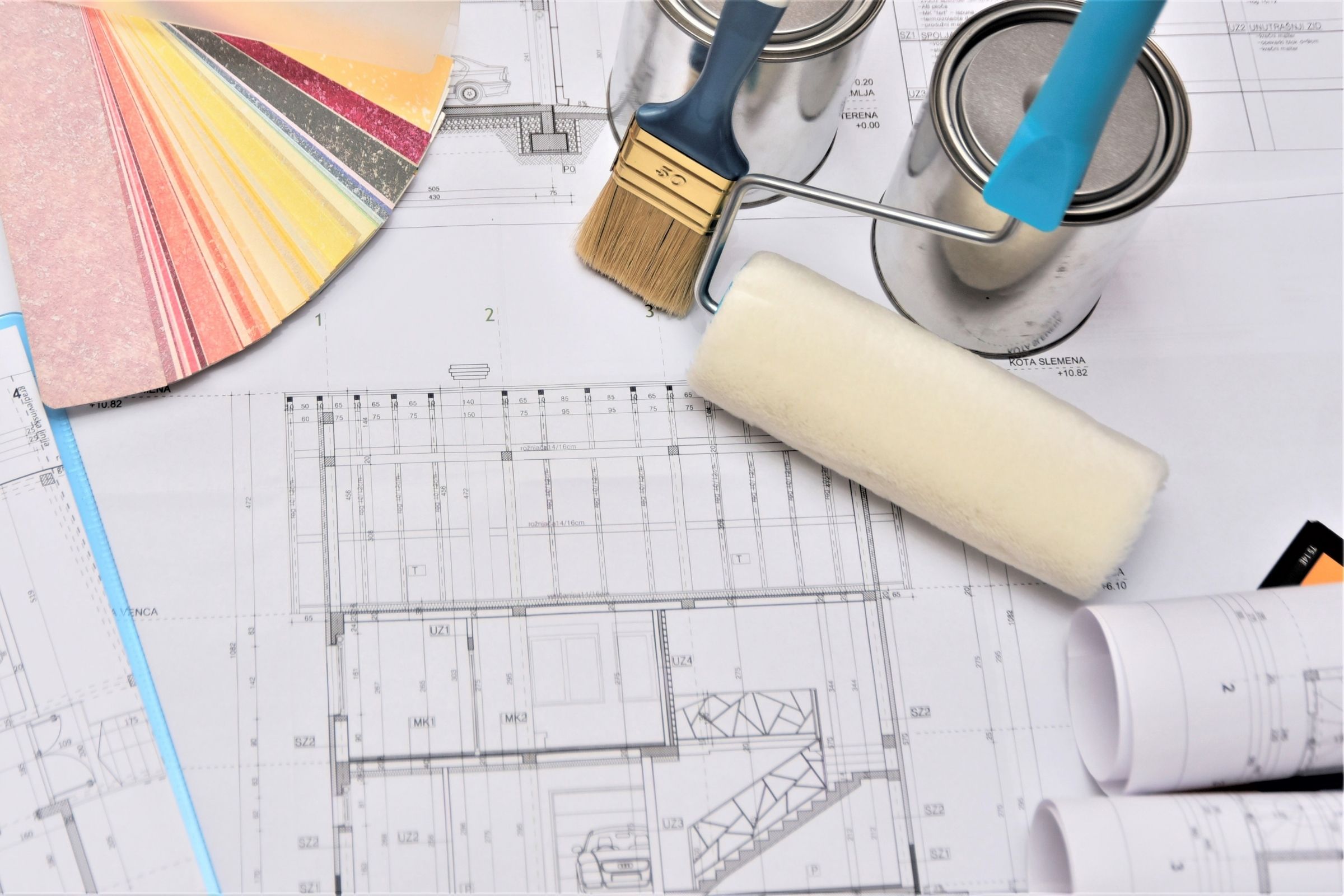Maximize Your Home's Value - The Ultimate Guide To Home Renovation ROI
Stop renovation regrets! Our expert-guided roadmap to Home Renovation ROI helps you invest smart, recoup costs, & watch your home's value soar!
Author:Frazer PughReviewer:Gordon DickersonJan 16, 20241.5K Shares51.1K Views

Curious about which home upgrades offer the best return on investment? At the forefront are kitchen and bathroom renovations, while pools tend to yield lower returns. Deciding which renovations to undertake is a pivotal question for anyone engaging in home improvement.
Predicting the likelihood of recovering the investment upon selling the house is challenging, as various factors influence a buyer's willingness to pay, such as the chosen project, materials used, and the local property market. There are numerous strategies to enhance the Home Renovation ROI(return on investment) for your home improvement projects.
Home Renovations Offer The Highest Returns
Not every renovation project carries the same weight. Renovations in kitchens, bathrooms, family rooms, or the addition of a master suite typically yield the most significant return on investment.
Here's a breakdown of the average return on investment one year later for various common home improvement projects:
Return On Investment For Home Improvements
- Minor kitchen remodel - With the average cost of $14,773 has Average Resale Value One Year Later $13,039.00 and return of 87%.
- Two-story addition - With the average cost of$67,743 has Average Resale Value One Year Later $56,770.00 and return of 83%.
- Bathroom addition - With the average cost of $14,216 has Average Resale Value One Year Later $11,704.00 and return of 81%.
- Major kitchen remodel - With the average cost of $38,769 has Average Resale Value One Year Later $31,344.00 and return of 80%.
- Family-room addition - With the average cost of $46,738 has Average Resale Value One Year Later $37,217.00 and return of78%.
- Deck - With the average cost of $5,865 has Average Resale Value One Year Later $4,498.00 and return of 75%.
- Master suite - With the average cost of $63,275 has Average Resale Value One Year Later $47,699.00 and return of 74%.
- Attic bedroom - With the average cost of $31,366 has Average Resale Value One Year Later $23,232.00 and return of 73%.
- Home office - With the average cost of $10,526 has Average Resale Value One Year Later $5,723.00 and return of 54%.
Spending More Doesn't Always Guarantee A Higher Return
According to Kermit Baker, the director of the remodeling futures program at the Joint Center for Housing Studies at Harvard University, potential homebuyers typically prioritize kitchens and bathrooms. Despite these spaces being potentially expensive to renovate, they are more likely to yield returns on investment. Additionally, adding rooms such as a family room or a master suite tends to enhance resale value, as larger homes generally command higher prices.
Conversely, swimming pools often fail to recoup their costs, as many buyers are unwilling to pay extra for what they perceive as a maintenance hassle. Home offices also tend to have lower returns for a similar reason: only a limited number of buyers seek a dedicated workspace. To illustrate, consider how much extra you would be willing to pay fora convertible car if you never intended to put the top down.
Kitchen Remodel Return On Investment
The cost of a project doesn't necessarily correlate with its potential return. Often, minor enhancements can result in significant gains. According to Remodeling magazine's annual cost-versus-value analysis, a kitchen "face-lift"involving painting, surface refinishing, and appliance upgrades can yield a higher return than a comprehensive redesign.
The key to cost-effectiveness lies in prudent spending. Remodeling senior editor Jim Cory, who oversees the survey, emphasizes that judiciously allocating $20,000 to a kitchen can drastically improve its appearance. The crucial factors are thoughtful design and wise product selection.
Is Remodeling A Sound Investment?
Even if your remodeling project enhances the appeal of most buyers, its value diminishes if it's solely tailored to your personal taste. Gopal Ahluwalia, director of research at the National Association of Home Builders, cautions that considering future resale is essential. He notes that while you might desire a room shaped like a cat or a mouse, finding a buyer with the same preference could be challenging. The prospect of selling the property someday should be a factor in decision-making.
Maintaining harmony with the original look and feel of the house is crucial, even for well-received remodeling projects. For instance, if adding a family-room extension to a Craftsman-style home, ensure the design aligns with the original aesthetics, including ceiling height, window styles, and moldings. Real estate agent Bobbi Chasin from Evanston, Illinois, emphasizes preserving the house's integrity and warns against compromising its appearance by adding a mismatched structure.
This principle applies to smaller projects as well. When selecting elements like kitchen cabinets, countertops, and flooring, opt for classic or neutral colors and styles. Remodeler Mark Scott from Bethesda, Maryland, shares an example of advising against a client's desire for a purple kitchen to match fireplace grout. Scott underscores the importance of avoiding unique and eccentric choices unless you're committed to staying in the house for an extended period, as potential buyers may not share the same preferences.
5 Factors Influencing Resale Value And ROI

Location
Kevin and Julianne Warren invested $42,000 in renovating the kitchen of their intricately designed 1950s ranch house, which was initially valued at approximately $150,000. However, their confidence in the remodel's wisdom stemmed from their prime location in the Forest Hills section of Grand Rapids, Michigan.
The neighborhood's high-end reputation, particularly for schools, assured them that the improvements would be a prudent investment. The surrounding properties valued at around $200,000 further validated that they hadn't overpriced their home in the local market—a crucial consideration for any remodeling endeavor. Israel Ramos, a real estate agent in Phoenix, Arizona, emphasizes the importance of aligning your home's value and improvements with the neighborhood's standards.
Overshooting the local market can jeopardize the likelihood of recouping your investment. As Ramos notes, "Don't exceed the ceiling for the neighborhood, or you won't get your money back." It's crucial to ensure that both your home's cost and the scope of your improvements are in harmony with the neighborhood.
For instance, in Seattle, real estate agent Kay Rigley encountered a situation where a former client spent $90,000 on renovating two bathrooms with features like heated floors and Italian tile. However, Rigley believes the property is worth at most $450,000, even though the owners spent over half a million dollars on the home, considering the initial property cost and other improvements. Rigley suggests consulting with a real estate professional before embarking on such significant remodeling projects to align them with the property's true market value.
Region
Your geographical location significantly influences various decisions when it comes to remodeling. For instance, labor costs tend to be more affordable in the South compared to the Northeast. This contrast is evident in Remodeling magazine's annual survey, which prices the same master bedroom suite at $59,401 in Louisville, Kentucky, and $73,814 in Westchester, New York.
Local nuances also play a role in shaping preferences. While a well-appointed family room is generally appealing nationwide, certain features garner differing levels of interest based on location. For instance, fireplaces tend to be more attractive to buyers in the North compared to the South, and decks contribute more value in warmer climates. While there are no strict rules, staying informed about local trends ensures that your remodeling choices align with the preferences of potential homebuyers.
Market
The real estate market introduces another layer of regional variation. In areas where housing demand is high, buyers are more likely to pay a premium for your improvements. An example from Bethesda builder Scott illustrates this, as he recently charged $300,000 for an expanded kitchen, breakfast room, and study—a renovation that set a record for his highest cost per square foot. The couple who invested in this project recouped their investment when they purchased an even larger house the following year. Scott notes the significant income disparity in places like Washington, D.C., compared to Missouri, emphasizing that regional economic factors play a crucial role.
However, caution is warranted even in a strong market, as it's possible to over-renovate. Brett Weinstein, a real estate broker in Oakland, California, warns about the Bay Area housing boom, stating that while prices are still high, individuals who paid a premium during the market's peak may need to live in their homes longer to realize the return on a substantial renovation investment, such as a $60,000 kitchen remodeling.
Timeline
As Weinstein emphasizes, the longer you reside in your home, the higher the likelihood of recovering your expenses. With home prices typically increasing at an annual rate of around 5 percent, your investment will eventually be absorbed by the growing value of your property. Additionally, staying in your home for an extended period allows you to enjoy the benefits of your renovations over the years. However, it's essential to note some caveats: relying too heavily on the expectation of annual price increases is risky, as market conditions can change, and unforeseen circumstances might necessitate putting your house on the market sooner than anticipated.
Time can work against certain projects as well. Harvard's Baker mentions the concept of stylistic depreciation, highlighting that current trends, such as the popularity of open spaces, may evolve over the years. Kitchens and bathrooms are particularly susceptible to appearing dated, as evidenced by the dismay of discovering outdated features in a dream house.
Hidden Expenses And Issues
If you anticipate a project will just about pay for itself, be prepared for unforeseen factors that could tip the balance against you. Home renovations often entail hidden expenses, such as additional costs when a project extends beyond the planned timeline, fees for specialized services like asbestos testing or heat-loss calculations, and the monthly interest payments for a home equity loan. Moreover, enhancing your home's value through renovation may lead to higher property taxes upon reassessment.
In conclusion, despite the potential for a return on investment, many experts caution against viewing home improvement purely as a financial investment. While being prudent about spending is essential, it's crucial to recognize that a new deck, for instance, doesn't function like a mutual fund.
Real estate agent Chasin advises conducting thorough research and making decisions based on personal preferences and affordability. She shares an example of a homeowner who invested $50,000 in an elaborate home office but eventually moved, not recouping the full investment. However, the homeowner found satisfaction in the decision, as it brought happiness to the family during their time in the house.
Understanding And Computing Home Renovation ROI Return On Investment (ROI)
Home Improvement ROI, or Return on Investment, is a measure that evaluates the financial return or profitability resulting from a home improvement project. It quantifies the value or gain derived from investing in the enhancement or renovation of a property, essentially gauging the increase in the property's value due to the undertaken home improvement efforts.
However, it's important to note that the majority of home improvements do not yield a 100% return on investment, despite depictions on HGTV shows like Fix it or Flip it that may suggest otherwise. The reality is that, for most home remodeling projects, making substantial profits is not guaranteed.
Homeowners can estimate their Home Improvement ROI using a simple formula:
Home Improvement ROI = (Net Gain from Home Improvement / Cost of Home Improvement) x 100
To apply the formula, calculate the difference by subtracting the Cost of Home Improvement from the Net Gain. Then, multiply the result by 100 to express it as a percentage.
For instance, let's consider a scenario where the Cost of Home Improvement is $10,000, and the Net Gain from Home Improvement is $15,000.
Difference = Net Gain - Cost of Home Improvement = $15,000 - $10,000 = $5,000
ROI = (Difference / Cost of Home Improvement) x 100 = ($5,000 / $10,000) x 100 = 50%
In this example, the Home Improvement ROI would be 50%, indicating a 50% return on the initial investment.
It's essential to keep in mind that this formula provides an estimate, and actual results may vary due to various factors.
Frequently Asked Questions - Home Renovation Roi
What Constitutes A Favorable Return On Investment For Home Improvement Endeavors?
A general guideline we often convey to homeowners is to anticipate an average return on investment (ROI) of around 70% for home renovation projects. However, drawing from our expertise in the renovation realm and insights derived from remodeling research, we can offer additional observations on this matter.
Are There Renovations That May Not Provide A Positive ROI?
Some highly personalized or niche renovations may not appeal to a broad range of potential buyers, potentially reducing the ROI. Examples include highly specific room themes or uncommon design choices.
Are There Hidden Expenses That Homeowners Should Consider When Calculating ROI?
Yes, hidden expenses such as project delays, unforeseen issues, additional fees for specialized services, and increased property taxes after reassessment should be factored into the overall cost and ROI calculations.
Conclusion
Transforming your house into a haven is rewarding, but savvy homeowners know it's also an investment. By prioritizing projects with high Home Renovation ROI, you can not only enhance your living experience but also unlock hidden value, making your home a magnet for eager buyers. Remember, strategic upgrades, quality materials, and market awareness are your keys to maximizing return. So, unleash the hidden potential of your home, renovate smart, and watch your investment blossom into a windfall upon resale.

Frazer Pugh
Author

Gordon Dickerson
Reviewer
Latest Articles
Popular Articles

